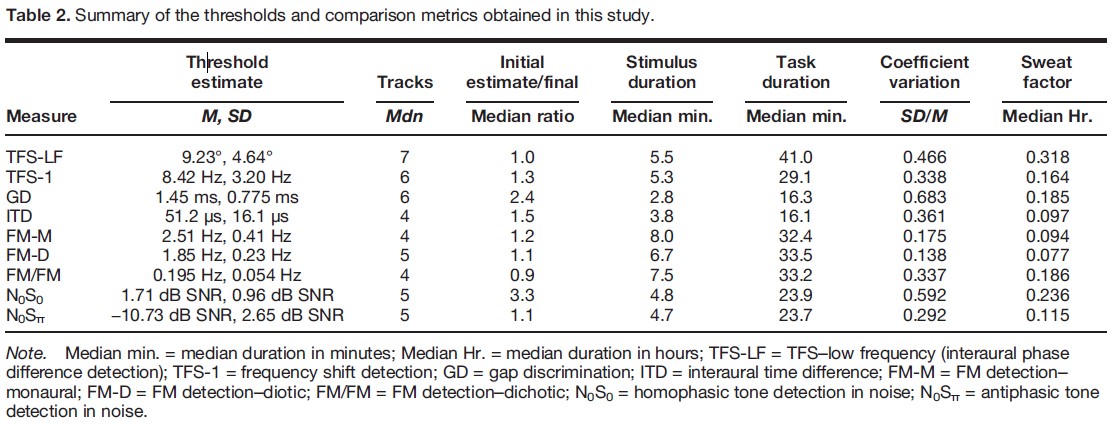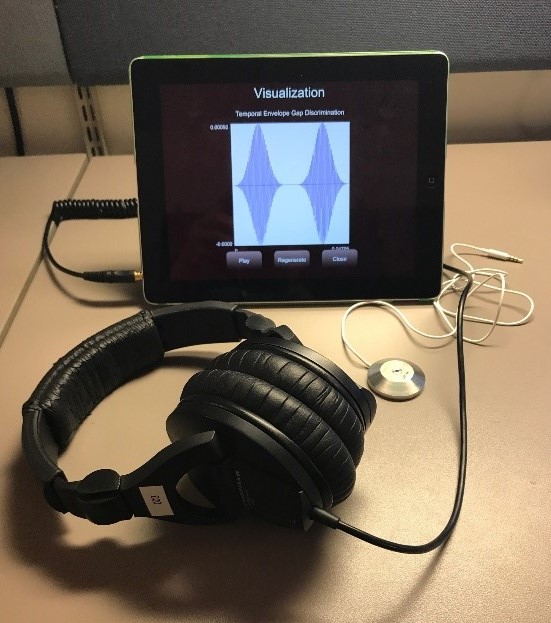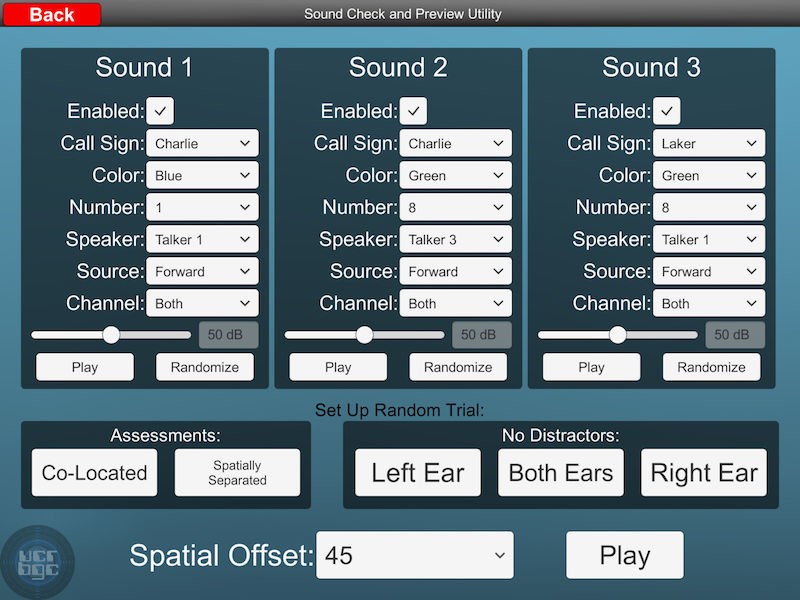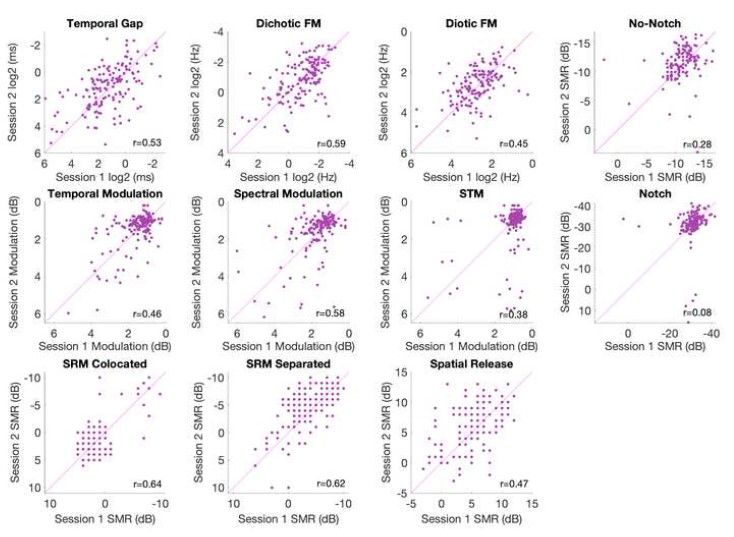Our Research Lab
Efficient Testing of Auditory Perception
To accomplish efficient characterization of central auditory dysfunction, we are developing and evaluating the Portable Automated Rapid Testing (P.A.R.T.) platform and test battery in collaboration with Northeastern University (Seitz) and Oregon Health Sciences University (Gallun).
For the vast majority of people with hearing loss, treatment decisions are based primarily on a basic audiological assessment including case history, otoscopy, evaluation of middle ear status, and hearing thresholds or audiogram. The audiogram measures the performance of the auditory system at the threshold of hearing, but the sounds that are important in people's lives are often at much higher levels. The most common auditory complaint is difficulty understanding speech in a noisy environment, such as a family gathering. The goal of this project is to develop auditory assessments that measure how listeners are able to encode and process sounds that are clearly audible. The development of these new assessments leverages our current understanding of auditory neuroscience, computational modeling, and psychoacoustics to create efficient tests for clinical diagnosis. The new test battery will expand our understanding of central auditory dysfunction and support novel diagnostic and treatment approaches.
 The project consists of four stages. In the first stage, psychometric properties of
various laboratory measures will be assessed to determine the best assessment of a
given dysfunction and the most efficient method to administer each test on a table
device platform. For example, see our investigation of various methods to potentially
index Temporal Fine Structure coding. The second stage consists of the development
of an application platform for tablet computers, supporting the controlled administration
of a battery of tests in a variety of experimental and clinical environments.
The project consists of four stages. In the first stage, psychometric properties of
various laboratory measures will be assessed to determine the best assessment of a
given dysfunction and the most efficient method to administer each test on a table
device platform. For example, see our investigation of various methods to potentially
index Temporal Fine Structure coding. The second stage consists of the development
of an application platform for tablet computers, supporting the controlled administration
of a battery of tests in a variety of experimental and clinical environments.

Consumer electronics that make up the P.A.R.T. platform. Sennheiser headphones, IPad, and IBoundry microphone for calibration.

Interface for configuring one of many possible measurement paradigms
Stage three consists of the evaluation of each test in the battery on a large number
of young listeners with healthy hearing. This will establish normative ranges for
each test and provide data that will be useful in computational models of auditory
processing. Composite scores for each of the initial test battery set up in P.A.R.T. Experiment.
Data are from 150 young-adult listeners.
Composite scores for each of the initial test battery set up in P.A.R.T. Experiment.
Data are from 150 young-adult listeners.
Finally, stage four consists of the deployment of the assessment battery in groups of listeners for whom the audiogram is a poor predictor of difficulty understanding speech in a noisy environment including older patients and those with a history of traumatic brain injury.
The long-term goal of this research is to bridge the gap between current theory in auditory neuroscience and clinical standard of care by creating tests that efficiently characterize central auditory dysfunction. Information gained in this study will be used as a foundation for the development and evaluation of novel treatments and provide a platform for large-scale clinical research projects.